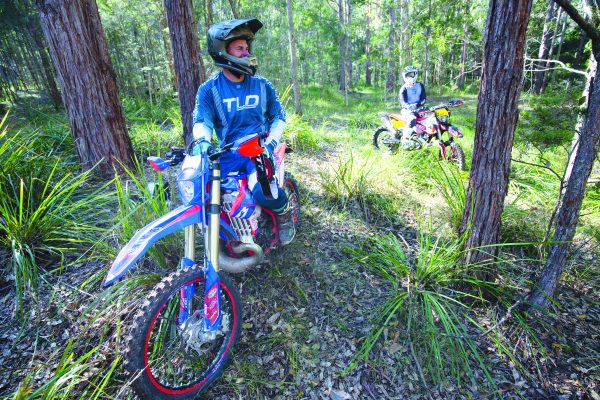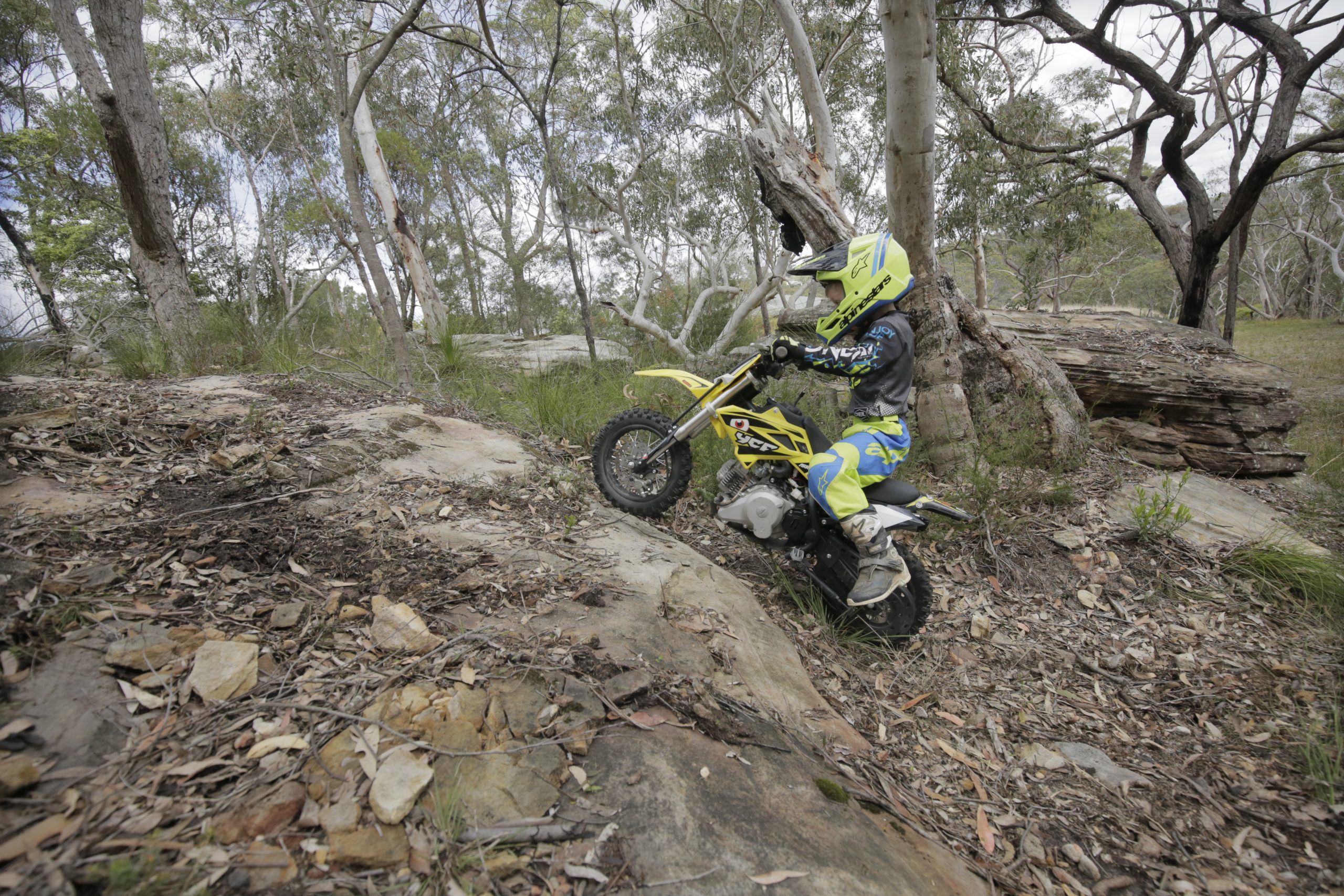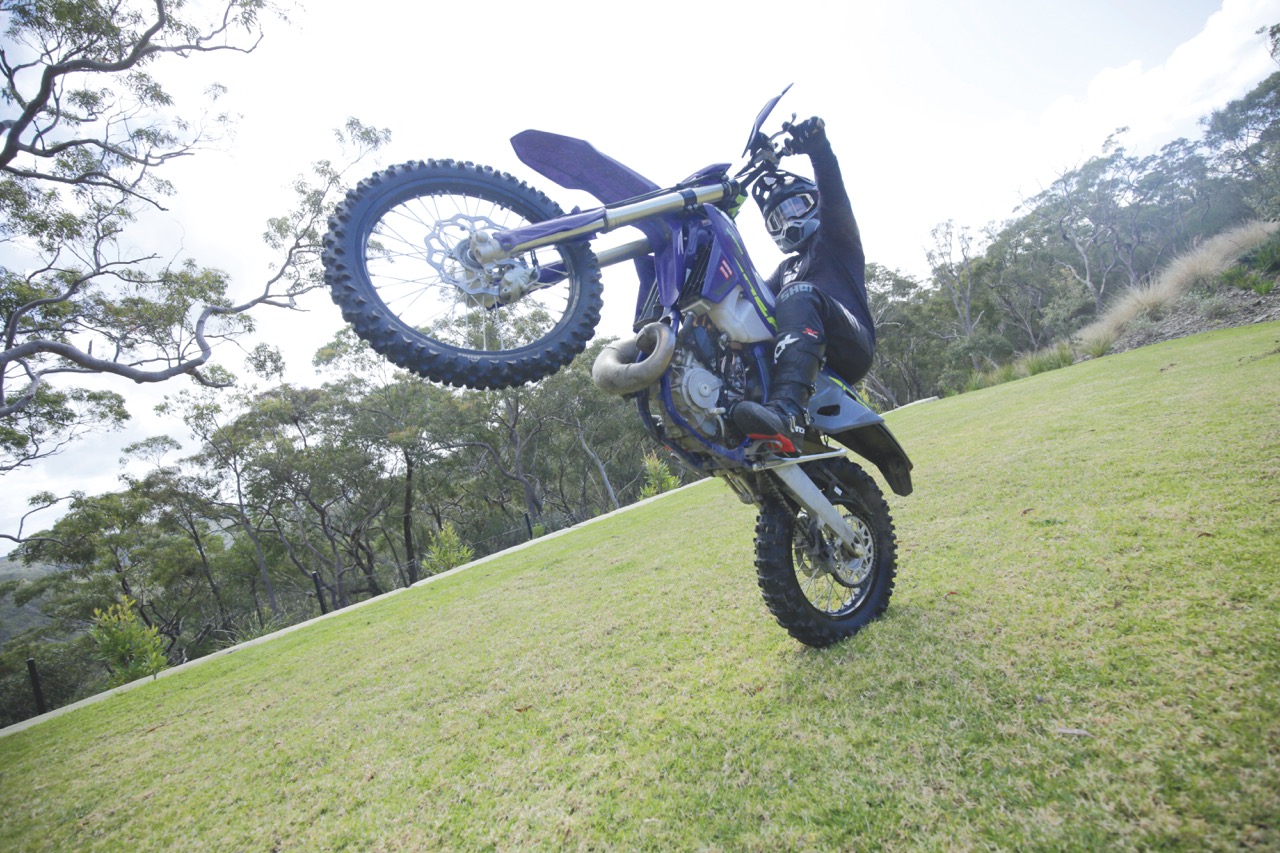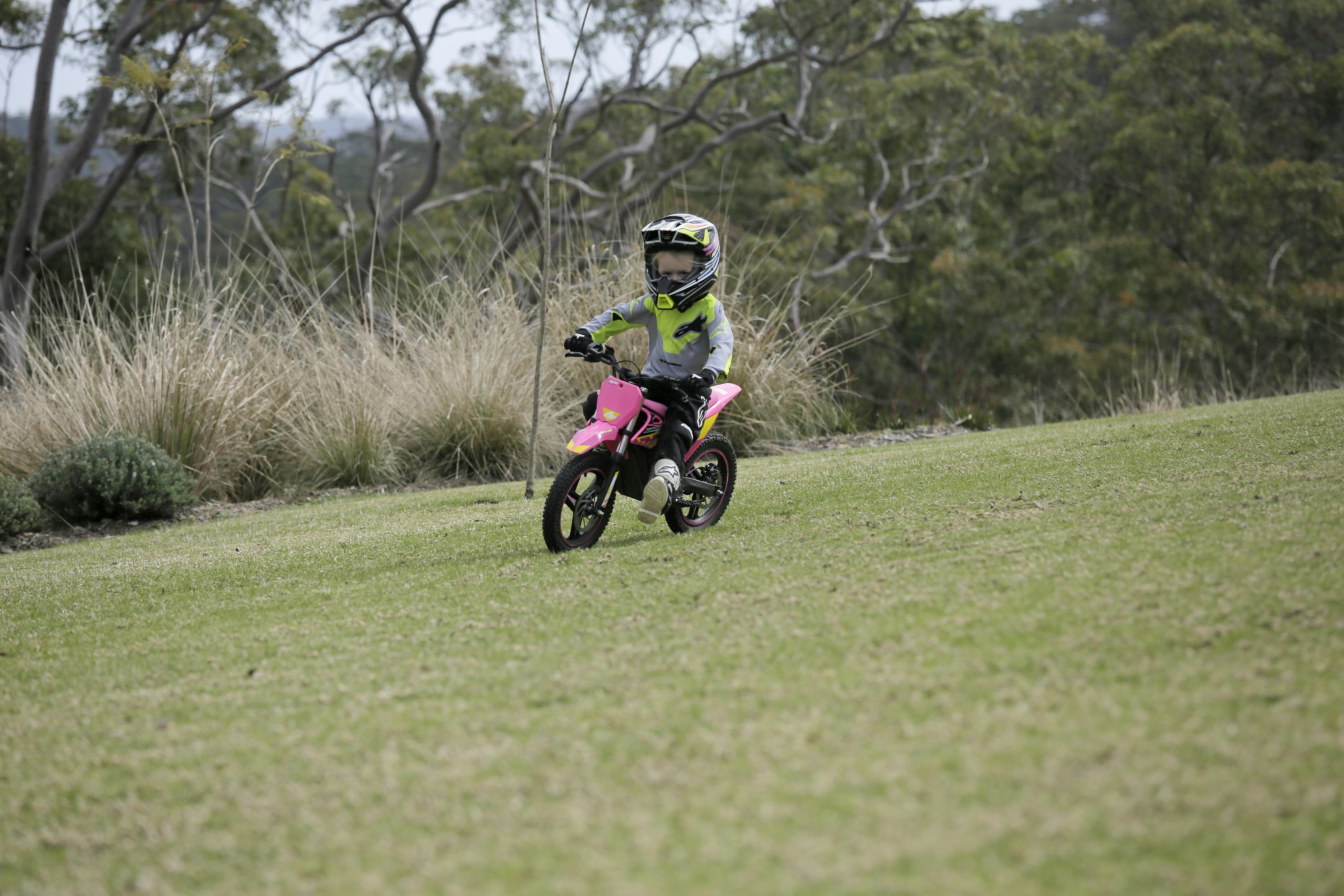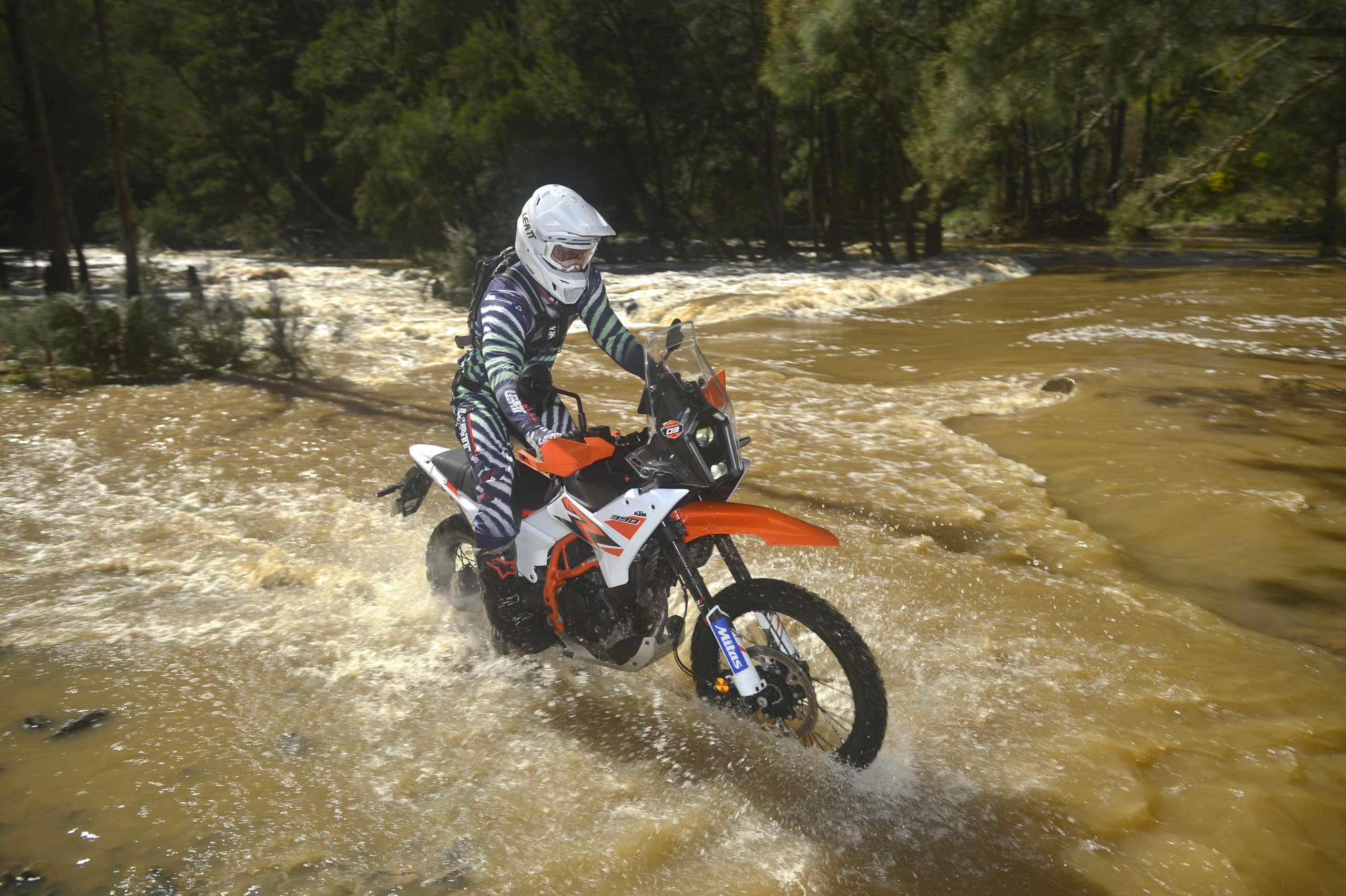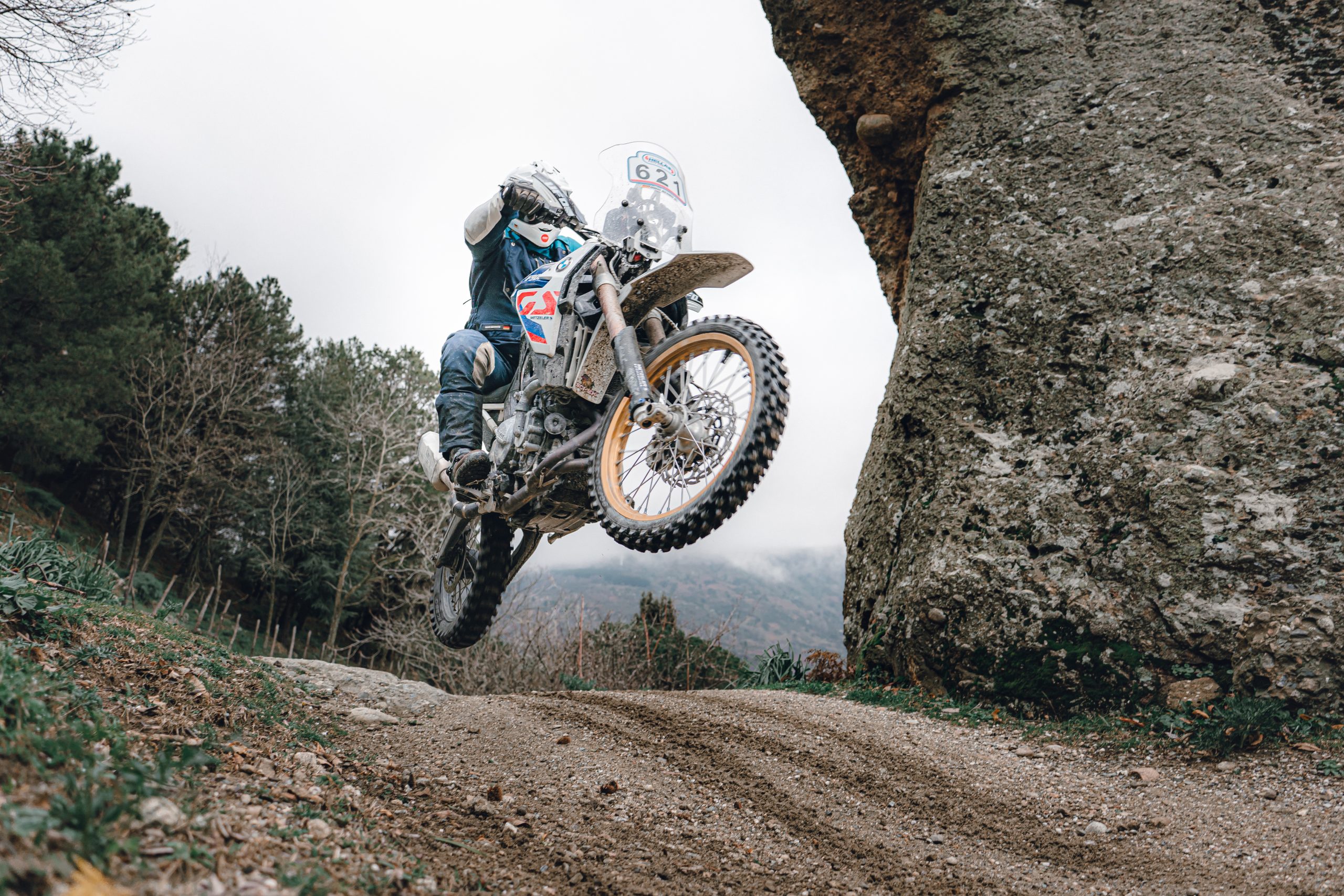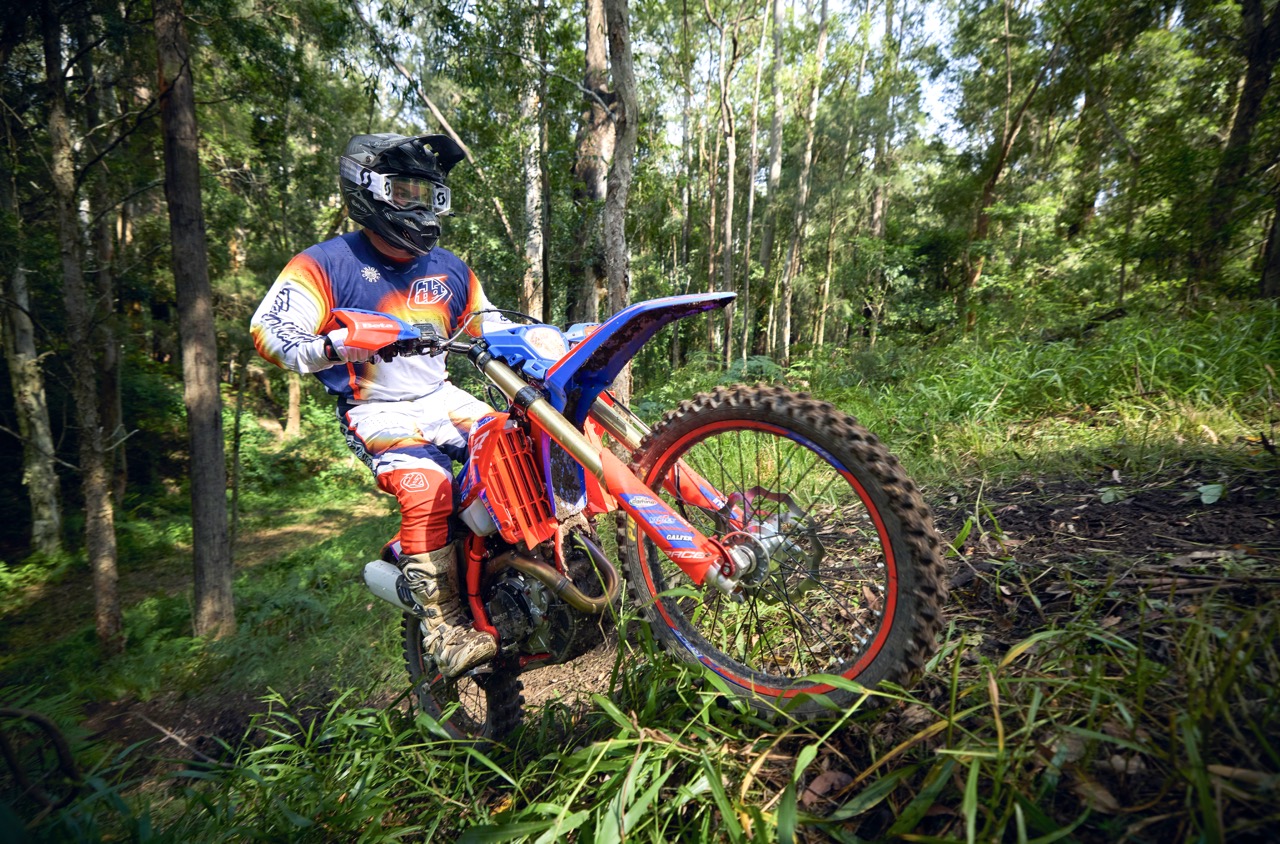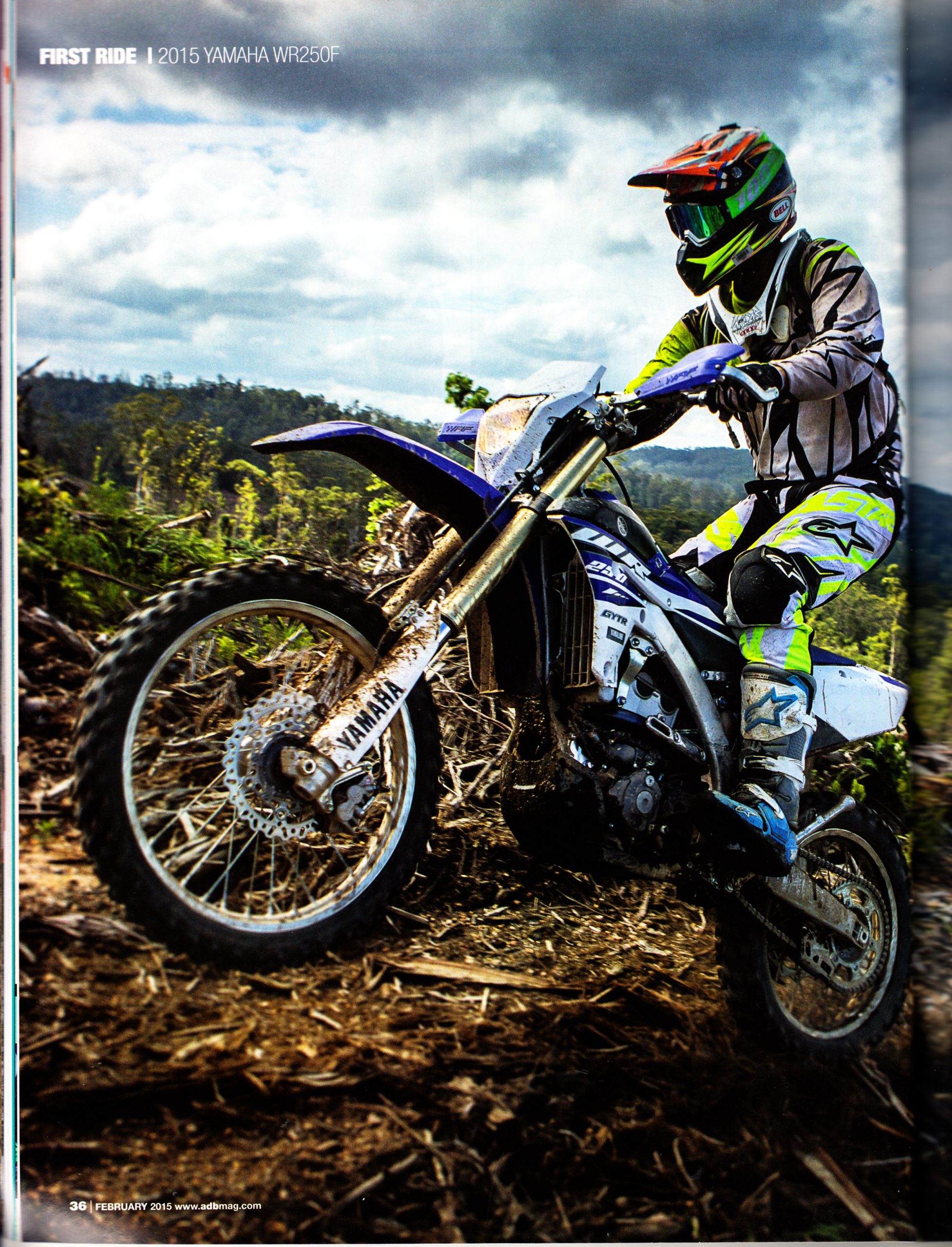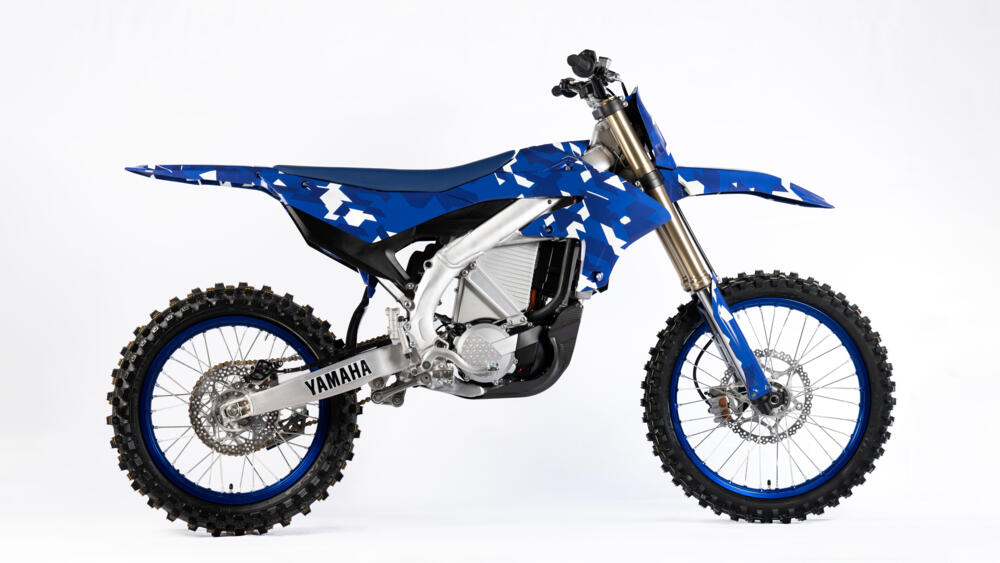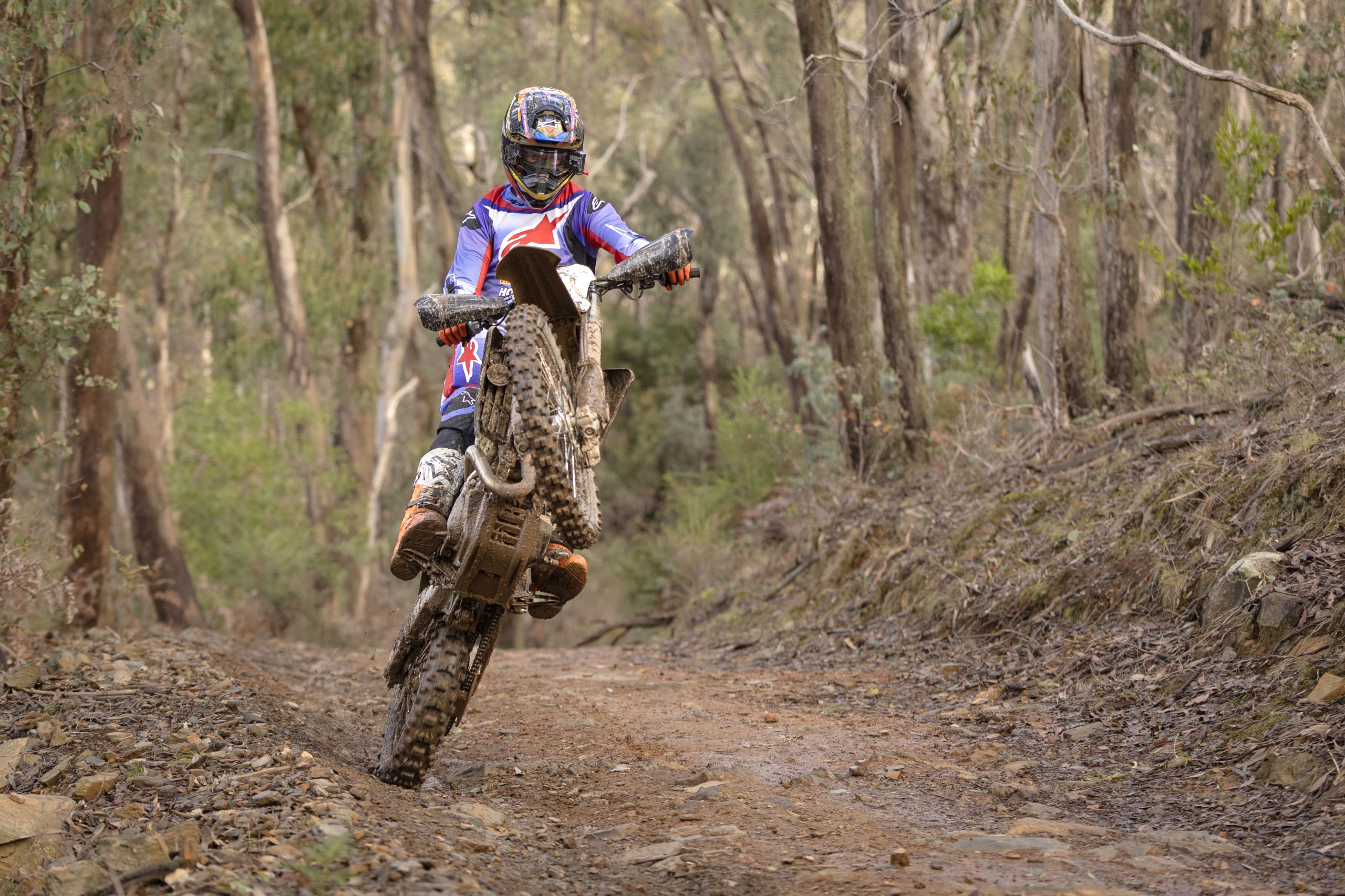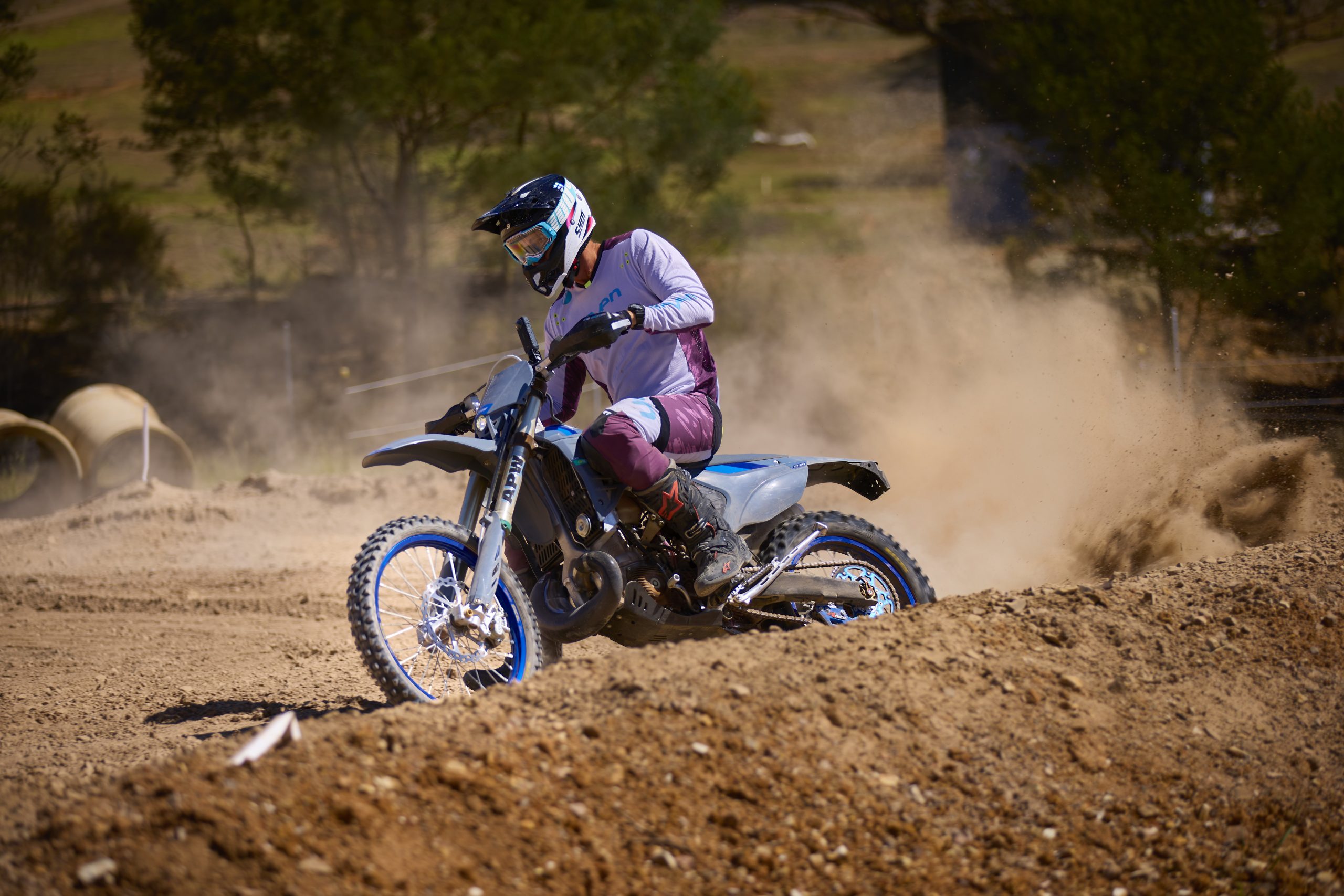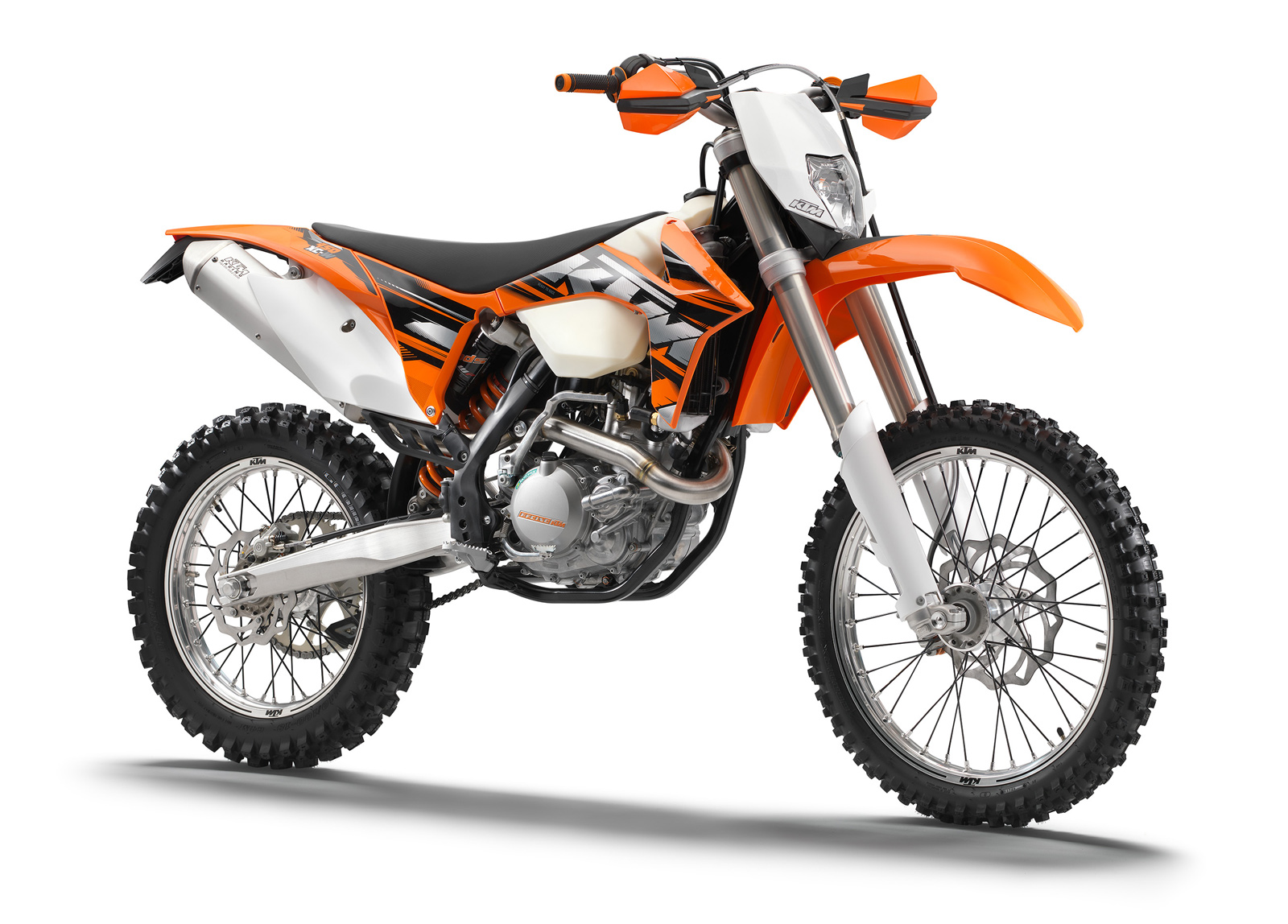Some months back we tested the Rieju MR 300 Pro. While we had the bike we trail tested it as well as stuck it on our dyno to see what sort of power it was producing, and then went about tuning it. While we had the Rieju we also put it up against the Beta RR 300 Racing to see how they compared.
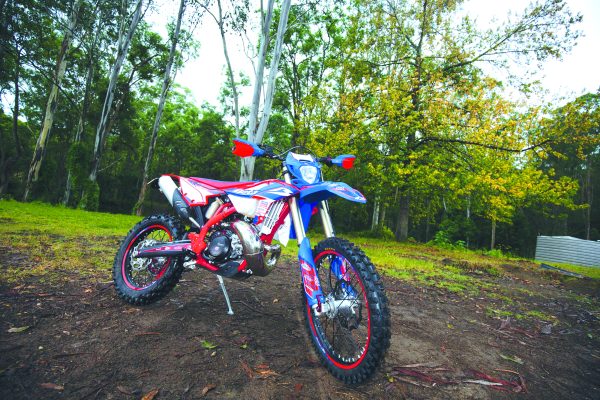
For those of you who missed our first few features, Rieju now owns the rights to the GasGas off-road motorcycles, and is allowed to reproduce the motorcycles but under its own name. This is why the Rieju looks a lot like a pre-KTM GasGas, because that’s exactly what it is.
Rieju took off right where GasGas finished and has even made several improvements to the bike, like updating the dreaded starter motor that was known to fail. We have even heard rumours that Rieju will come out with its own complete model in the near future that has been developed from the old GasGas model.
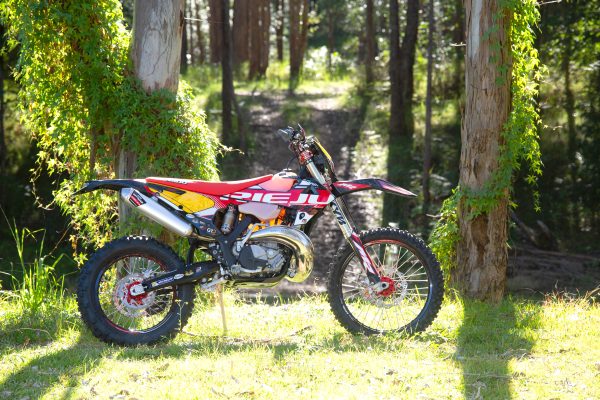
The Beta 300 RR Racing is becoming more popular out on the trails. We aren’t here to convince anyone how good a 300cc two stroke is on the trail; if this feature has caught your eye and you are reading this then you already know how much fun a 300cc two stroke is to ride.
The carby-fed two stroke, however, is a dying breed. It may not be dying quickly but with emissions laws being tightened all around the world manufacturers are being pushed into fuel-injected two strokes. The problem with a carby-fed two stroke is a portion of the air/fuel mixture escapes through the exhaust unburnt, but a fuel-injected two stroke can be tuned so to limit this problem, thus producing less emissions. This can be counterproductive to performance, and even affect engine life, but that is a conversation for another time. For now we are focusing on two of the last surviving carby-fed, adrenaline-pumping big bore two strokes.
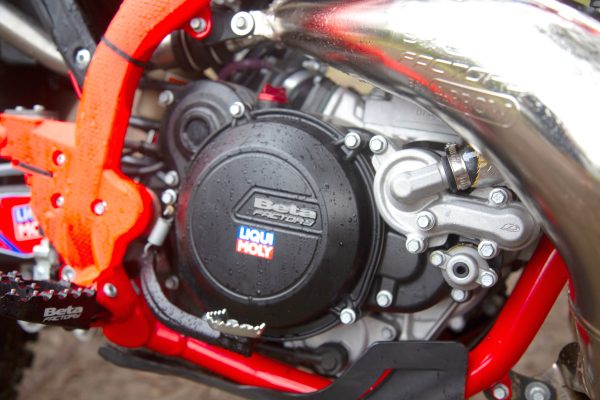
Engines
The Rieju engine was originally designed by GasGas in Spain. Rieju hasn’t just left the engine unchanged, it has updated the starter to be stronger and more durable than the original GasGas design while adding parts like the V-Force reeds, Funnelweb filter and a complete OXA exhaust system. For you tech guys, the Rieju engine uses a bore and stroke of 72mm x 72mm to make a capacity of 299.3cc while the Beta uses a larger piston at 73mm but a shorter stroke at 69.9mm to make a capacity of 292.6cc. Both engines however use digital CDI ignitions with wet and dry maps selectable on the handlebars. As both of these bikes are carby fed the mapping only changes the ignition timing, with the wet-map ignition timing being retarded to make the engine rev up slower and to prevent wheel spin in slippery conditions.
Both engines are water cooled with wet multi-plate hydraulic clutches and adjustable power valves. The Beta power valve adjuster is easier to access and can be adjusted with fewer tools than the Rieju power valve. The Beta also has a twin-spark head which houses two spark plugs compared to the Rieju’s single spark plug. Both spark plugs in the Beta head fire at the same time but are located at different angles designed to improve the engine’s torque while retaining top-end power.
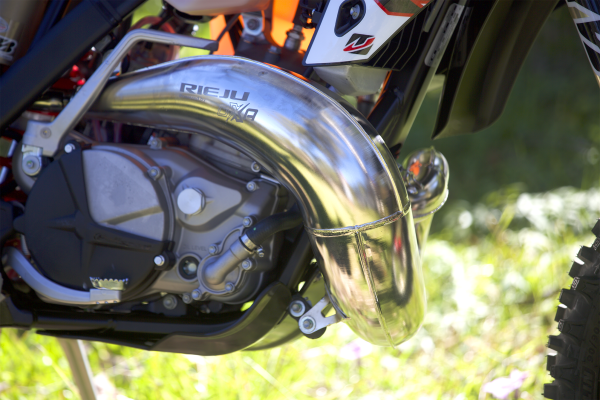
Chassis
Both the Rieju and Beta use steel Chromoly frames with aluminium subframes. Both bikes use a monoshock rear with a linkage system and both brands use KYB suspension both front and rear, with the only real difference in the suspension being that Rieju uses a DLC coated lower fork tube which is more durable with lower friction properties.
The Beta front suspension travel is 295mm compared to the Rieju at 300mm, and the Beta shock stroke length is 135mm compared to the Rieju at 131mm. The Rieju comes in heavier than the Beta by 1.5kg. The Rieju also has a smaller rear disc by 20mm which, depending on how you look at it, can be a good thing. While motocross riders would rather opt for a larger disc with more stopping power, enduro riders tend to lean more towards less braking power on the rear so they are less likely to lock the rear brake, which stands the bike up in turns and ruins the roll speed through ruts and turns. The Rieju is shorter in length, narrower between the legs, has a lower handlebar height, but it shares the same seat height as the Beta at 950mm.
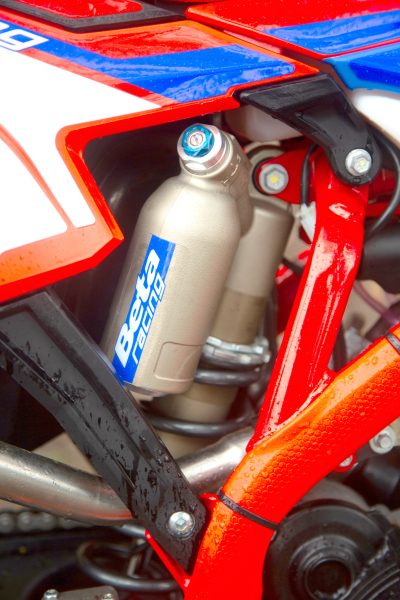
Showroom
The Rieju sits on the showroom floor at $15,990 whereas the Beta is $17,045. Apart from the difference in price is the number of dealers. While Beta’s dealer network isn’t as big as many other manufacturers in Australia, it is definitely bigger than Rieju’s. Beta’s network of dealers is growing while Rieju is also pushing for more dealers and brand awareness around the country.
Beta has an online shop where you can buy directly from Beta Australia but by listing your preferred dealer, said dealer will receive the profits from the payment. You need to purchase Rieju parts from a Rieju dealer, but I’m sure most would be happy to post parts to you if needed. Beta also air freight parts to Australia weekly and Rieju will air freight any parts needed, meaning the backorder time for both brands is less than many of the big manufacturers whose backorder times can start at six weeks… and stretch on for months.
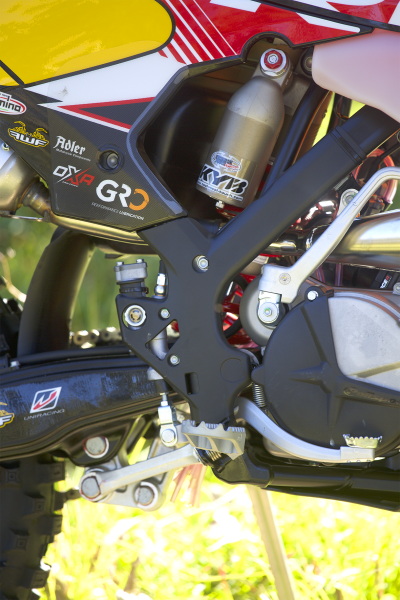
Reliability and maintenance
Both the Beta and Rieju are quality machines with strong engines. Older model Riejus are known to have starter issues, especially when cold. The Rieju does however have a kickstart back up whereas the Beta does not. Mechanically, I would consider both of these machines well designed and well made. From working on both of these machines, however, I would say Rieju uses softer fittings which can result in stripped bolts if you are heavy handed. Having said that, the alloy and steel around the rest of the chassis on the Rieju seems as strong as anything else, it’s just the engine materials that seem soft.
While the switchblock on the handlebars can seem clunky on the Rieju, and the start button is on the wrong side, we never encountered any electrical issues with it. I am concerned though that Rieju uses many of the same electrical plugs as Beta, and the Beta is well known for water getting into electrical plugs and causing shorts or corrosion. My advice with either of these machines would be to periodically clean and dry the electrical connectors and apply some dielectric grease to the terminals to prevent any corrosion.
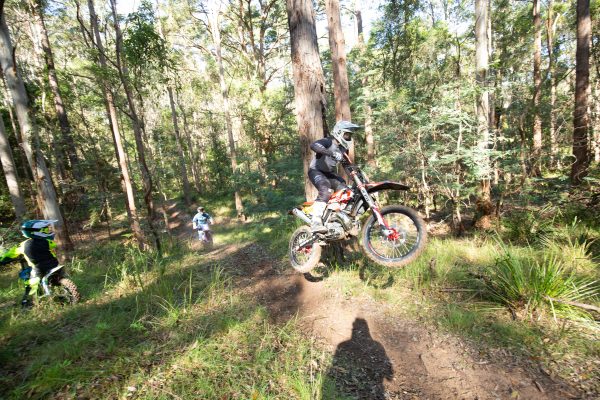
On the trail
On the trail both the Rieju and Beta perform very well. The Rieju has a more race-like feel to it. The power is snappier and it revs harder but the Beta has a smoother power curve. The Beta’s power is both smooth and broad with loads of torque whereas the Rieju gives me two-stroke motocross bike vibes.
They are both very capable bikes especially since they have both been equipped with KYB suspension. Both setups are very smooth and predictable while being on the plush and comfortable side but the Rieju suspension is slightly stiffer.
The Beta’s gearing is really good whereas the Rieju could do with one tooth bigger on the rear sprocket. The Beta is a great bike for lugging along at low revs while the Rieju just wants to take off; we found the Rieju to not be as smooth through the rev range until we adjusted the power valve to open earlier. This got rid of a small lull in the power and smoothed the engine out. It took away a bit of the harshness in the power as the engine revved up but made the bike smoother to ride and easier to crawl along and hold a constant rpm.
Both of these machines are strong contenders in the 300 two-stroke class and would serve any hard enduro enthusiast very well.
